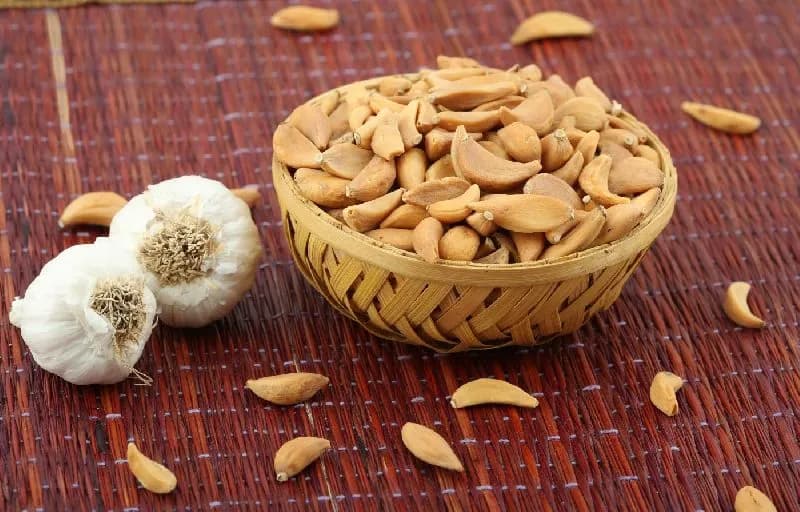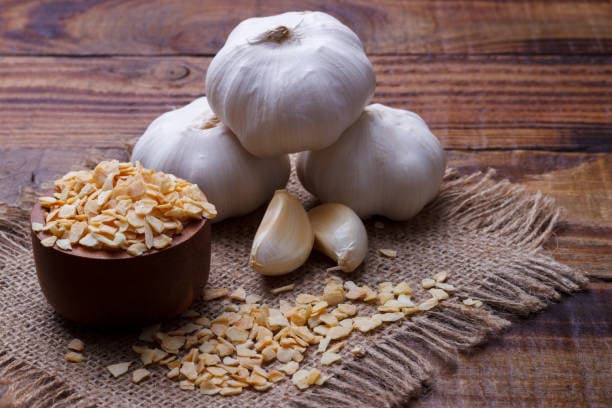Introduction: The Garlic Revolution in Modern Cooking
In the culinary world, few ingredients spark as much debate as the choice between fresh and dried garlic. As global food trends evolve and home cooking becomes increasingly sophisticated, understanding the nuances between these two forms has never been more crucial. This comprehensive guide delves deep into the science, economics, and practical applications of both fresh and dehydrated garlic, empowering you to make informed decisions for your culinary needs.
The global dried garlic market, valued at $2.8 billion in 2023, reflects a significant shift in how professional chefs and home cooks approach this fundamental ingredient. But what’s driving this transformation, and how can you leverage both forms to elevate your cooking?
The Science Behind Garlic Processing
Understanding Fresh Garlic Chemistry
Fresh garlic contains approximately 65% water and delivers its characteristic punch through allicin, a sulfur compound formed when garlic cells are crushed. This volatile compound provides:
- Immediate antimicrobial properties
- Peak antioxidant activity within 10 minutes of crushing
- Complex flavor compounds that evolve during cooking
- Natural enzymes that interact with other ingredients
The Dehydration Process: Preserving Power
Modern dehydrated garlic production employs sophisticated techniques that preserve maximum flavor while extending usability:
Air-Drying Method: Traditional yet effective, maintaining 85% of original compounds
Freeze-Drying Technology: Preserves 95% of nutritional content and volatile oils
Vacuum Dehydration: Prevents oxidation, retaining bright color and fresh taste
Spray-Drying: Creates uniform powder with instant solubility
Each method produces distinct characteristics in the final product, influencing everything from flavor intensity to rehydration properties.
Comprehensive Product Forms and Applications
The Dehydrated Garlic Spectrum
Modern dehydrated garlic manufacturers offer an impressive array of products, each engineered for specific culinary applications:
Garlic Cloves (Whole Dried)
- Moisture Content: 6-8%
- Rehydration Ratio: 1:5 with warm water
- Best Applications: Slow-braised dishes, confits, infused oils
- Professional Tip: Rehydrate in wine or broth for enhanced flavor
Garlic Chopped (3-5mm pieces)
- Processing Method: Precision-cut before dehydration
- Flavor Release: Gradual, ideal for long cooking
- Primary Uses: Pizza toppings, bread preparations, meat rubs
- Storage Life: 24-36 months in proper conditions
Garlic Minced (1-3mm pieces)
- Texture Profile: Quick-dissolving with visible presence
- Heat Stability: Excellent for high-temperature cooking
- Applications: Stir-fries, instant sauces, marinade bases
- Industry Usage: Ready-to-eat meal manufacturing
Garlic Granules (0.5-1mm)
- Particle Uniformity: 95% consistency
- Dispersion Rate: 30 seconds in liquid
- Versatility: Seasoning blends, dry rubs, coating mixes
- Commercial Advantage: No clumping in humid conditions
Garlic Powder (Under 0.25mm)
- Fineness: 100-mesh standard
- Instant Integration: Dissolves in 5-10 seconds
- Applications: Liquid seasonings, emulsions, baked goods
- Concentration: 1/8 teaspoon equals one fresh clove
Fresh Garlic Varieties and Selection
Understanding fresh garlic varieties enhances culinary outcomes:
Hardneck Varieties:
- Rocambole, Porcelain, Purple Stripe
- Complex flavors, shorter storage life
- 4-12 cloves per bulb
Softneck Varieties:
- Artichoke, Silverskin types
- Milder flavor, longer storage
- 12-20 cloves per bulb
Elephant Garlic:
- Actually a leek variant
- Mild, sweet flavor
- Ideal for roasting whole
Nutritional Analysis: Beyond Basic Comparisons
Comprehensive Nutrient Retention
| Nutrient | Fresh Garlic (per 100g | Dehydrated Garlic (per 100g) | Retention Rate |
| Calories | 149 | 331 | Concentrated |
| Protein | 6.4g | 16.6g | 260% |
| Fiber | 2.1g | 9.0g | 428% |
| Vitamin C | 31.2mg | 1.2mg | 4% |
| Selenium | 14.2μg | 23.9μg | 168% |
| Manganese | 1.7mg | 2.6mg | 153% |
| Allicin Potential | 100% | 60-80% | Variable |
Bioactive Compounds Comparison
Fresh Garlic Advantages:
- Higher S-allyl cysteine content
- Active alliinase enzyme
- Full spectrum of volatile oils
- Maximum vitamin C levels
Dried Garlic Benefits:
- Concentrated minerals
- Stable organosulfur compounds
- Enhanced certain antioxidants through drying
- Longer bioavailability window
Economic and Practical Considerations
Cost-Benefit Analysis
Fresh Garlic Economics:
- Average cost: $3-5 per pound
- Usable yield: 87% after peeling
- Labor time: 2-3 minutes per head
- Waste factor: 13% (skins, sprouted cloves)
Dried Garlic Value Proposition:
- Cost equivalent: $8-12 per pound
- Usable yield: 100%
- Labor time: Zero prep required
- Waste factor: 0%
- Actual cost per use: 40% less than fresh when factoring labor and waste
Professional Kitchen Insights
Leading restaurants increasingly adopt a dual-garlic strategy:
Fresh Garlic Reserved For:
- Signature sauces requiring specific flavor profiles
- Raw preparations (aioli, chimichurri)
- Whole roasted presentations
- Infusions and pickles
Dried Garlic Preferred For:
- High-volume prep stations
- Consistent seasoning blends
- Cost-controlled menu items
- Emergency backup inventory
Advanced Culinary Techniques
Maximizing Fresh Garlic Impact
The 10-Minute Rule: After crushing, let fresh garlic rest for 10 minutes before heating to maximize allicin formation
Temperature Control: Keep cooking temperature below 140°F (60°C) to preserve beneficial compounds
Acid Activation: Add lemon juice or vinegar to stabilize allicin and enhance bioavailability
Optimizing Dried Garlic Performance
Blooming Technique: Toast dehydrated garlic flakes in oil at low temperature to awaken dormant flavors
Rehydration Science: Use 3:1 liquid ratio at 140°F for optimal texture restoration
Compound Building: Layer different forms (granules, powder, flakes) for complex flavor development
Industrial Applications and Trends
Food Manufacturing Preferences
The food processing industry increasingly relies on dehydrated garlic for:
Snack Foods:
- Uniform flavor distribution
- Extended shelf stability
- No moisture introduction
Sauce Production:
- Consistent batch quality
- Simplified inventory management
- Year-round availability
Meat Processing:
- Better adhesion in dry rubs
- No bacterial introduction risk
- Standardized flavor profiles
Emerging Market Trends
Clean Label Movement: Driving demand for single-ingredient dried garlic products
Organic Certification: 40% growth in organic dehydrated garlic granules demand
Specialty Varieties: Black garlic powder, roasted garlic flakes gaining traction
Sustainable Processing: Solar drying and zero-waste initiatives
Storage Mastery and Shelf Life Optimization
Fresh Garlic Storage Strategies
Optimal Conditions:
- Temperature: 60-65°F (15-18°C)
- Humidity: 60-70%
- Ventilation: Essential for preventing mold
- Expected Life: 3-6 months for quality varieties
Common Mistakes:
- Refrigerator storage (causes sprouting)
- Plastic bags (trap moisture)
- Direct sunlight exposure
- Storing near potatoes (accelerates spoilage)
Dried Garlic Preservation
Professional Storage Protocol:
- Airtight containers with desiccants
- Temperature below 70°F (21°C)
- Humidity below 60%
- Dark storage environment
- Shelf life: 2-3 years properly stored
Quality Indicators:
- Color retention (avoid yellowing)
- Aroma strength (should remain potent)
- Clumping absence (indicates moisture)
- Flavor intensity (taste-test annually)
Health and Wellness Applications
Therapeutic Considerations
Fresh Garlic Benefits:
- Cardiovascular support through fresh allicin
- Immediate antimicrobial action
- Blood pressure regulation
- Cholesterol management
Dried Garlic Advantages:
- Concentrated prebiotic fiber
- Stable antioxidant delivery
- Convenient supplementation
- Reduced digestive irritation
Dietary Integration Strategies
For Maximum Health Benefits:
- Combine both forms for synergistic effects
- Use fresh for raw applications
- Choose dried for cooked dishes
- Rotate varieties for nutrient diversity
Making the Right Choice: Decision Framework
When Fresh Garlic Excels
Choose fresh when:
- Recipe specifically requires it
- Making raw preparations
- Seeking maximum pungency
- Creating infusions or oils
- Presentation matters
When Dried Garlic Dominates
Opt for dried when:
- Batch cooking or meal prep
- Making spice blends
- Traveling or camping
- Budget consciousness matters
- Consistency is crucial
Future Innovations in Garlic Processing
Technology Advances
Encapsulation Technology: Protecting volatile compounds in garlic powder
Ultrasonic Drying: Preserving 98% of bioactive compounds
Cryogenic Processing: Flash-freezing for maximum nutrient retention
Nano-Technology: Enhanced bioavailability in supplements
Conclusion: The Balanced Approach
The fresh versus dried garlic debate ultimately resolves not in choosing one over the other, but in understanding when each form serves your needs best. Modern dehydrated garlic manufacturers have elevated dried garlic from a mere convenience product to a sophisticated culinary ingredient that stands proudly alongside its fresh counterpart.
Whether you’re reaching for dehydrated garlic flakes for your signature spice blend or crushing fresh cloves for a classic aglio e olio, both forms deserve a place in your kitchen arsenal. The key lies in understanding their unique properties, optimizing their use, and appreciating the distinct advantages each brings to your culinary creations.
As cooking continues to evolve, embracing both fresh and dried garlic ensures you’re equipped for any culinary challenge, from quick weeknight dinners to elaborate feast preparations.
Frequently Asked Questions
Q1: What’s the conversion ratio between fresh and dried garlic? Generally, 1/8 teaspoon of garlic powder equals one fresh clove. For dehydrated garlic flakes, use 1/2 teaspoon per clove. For granules, use 1/4 teaspoon. These ratios may vary based on the specific product and desired intensity.
Q2: Can dried garlic provide the same health benefits as fresh?
While fresh garlic offers maximum allicin content, dried garlic retains significant health benefits including concentrated minerals, stable antioxidants, and prebiotic fiber. Many bioactive compounds remain intact or even become more bioavailable through the drying process.
Q3: How can I tell if my dried garlic has gone bad?
Check for color changes (yellowing or darkening), loss of aroma, clumping (indicates moisture exposure), or off-flavors. Quality dehydrated garlic should maintain its original color and strong aroma for 2-3 years when properly stored.
Q4: Which form is more cost-effective for restaurants?
When considering labor costs, waste reduction, and consistency, dried garlic often proves more economical for high-volume operations. However, premium establishments may justify fresh garlic costs for signature dishes where its unique flavor profile is essential.
Q5: Can I make my own dried garlic at home?
Yes, using a food dehydrator at 115-130°F (46-54°C) for 6-12 hours, or oven-drying at the lowest setting. However, commercial dehydrated garlic manufacturers achieve superior consistency, safety standards, and shelf stability through professional equipment and processes.
Q6: Is organic dried garlic worth the extra cost?
Organic dried garlic offers pesticide-free assurance and often superior flavor due to careful cultivation methods. For regular users or those with health concerns, the 15-20% premium for organic dehydrated garlic granules or flakes can be worthwhile.





